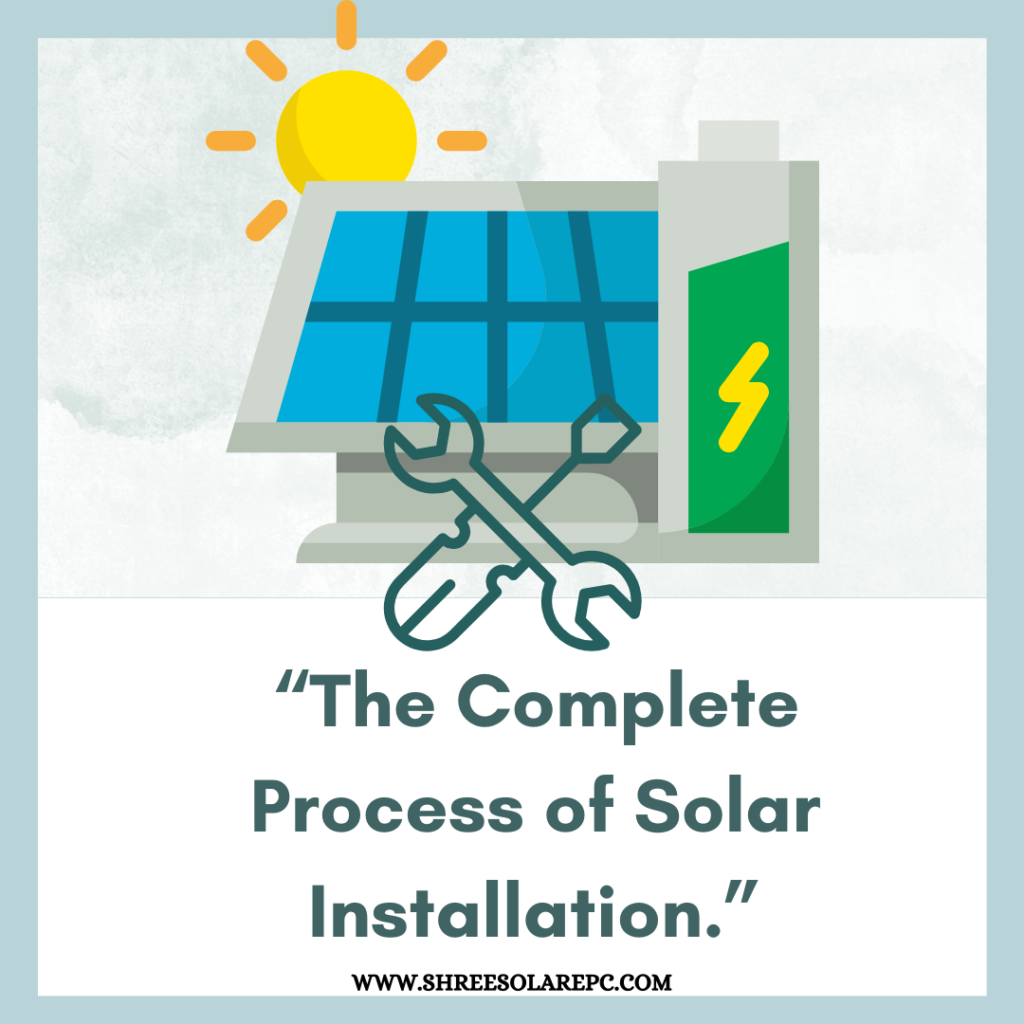
"The Complete Process of Solar Installation."
In a world racing towards renewable energy, solar power has emerged as a true superstar, illuminating the path to a cleaner, greener future. But how exactly does one go about capturing the sun’s rays and transforming them into electricity? Well, that’s precisely what we’re here to explore. Installing solar panels on your home or business not only reduces your carbon footprint but also lowers your energy bills. In this blog, we’ll walk you through the complete process of solar installation, shedding light on each step along the way.
Step 1: Initial Assessment
Before embarking on your solar journey, it’s crucial to assess your energy needs and the potential of your location for solar power. Here’s what you should consider:
Energy Usage: Analyze your past electricity bills to determine your energy consumption patterns. This information will help size your solar system correctly. Before diving into solar installation, conduct an energy audit of your property. Understand your current energy consumption patterns to determine the size of the solar system you’ll need. Also, take into account your future needs of energy like electric car or bike.
Roof Evaluation: Assess the condition, orientation, and shading of your roof. A south-facing, shade-free roof is ideal for maximum solar exposure.
Local Regulations: Check local regulations and permitting requirements for solar installations. Some areas offer incentives and rebates for going solar.
Step 2: Design and System Sizing
Once you’ve gathered the necessary data, it’s time to design your solar system:
System Size: Based on your energy needs and available roof space, your installer will determine the size of your solar array.
Panel Selection: Choose solar panels that suit your needs and budget. Consider factors like efficiency, warranty, and aesthetics.
Inverter Selection: Select an inverter (or inverters) to convert DC electricity generated by the panels into usable AC electricity for your home.
System Layout: Your installer will create a layout that optimizes panel placement for maximum sunlight exposure.
Step 3: Financing and Incentives
Before you commit to solar installation, explore financing options and available incentives:
Financing: Decide whether to purchase the system outright, lease it, or opt for a Power Purchase Agreement (PPA).
Tax Credits and Incentives: Research federal, state, and local incentives, including tax credits and rebates, that can significantly reduce installation costs.
Step 4: Installation
With the plan in place, it’s time to turn your solar dreams into reality:
Permitting: Your installer will obtain the necessary permits and approvals from local authorities.
Roof Preparation: If needed, your roof will be repaired or reinforced to support the solar panels.
Panel Installation: Solar panels, racking, and wiring are installed on your roof or property. This process typically takes a few days to a week.
Inverter Installation: Inverters are connected to the panels, and the electrical system is integrated with your home.
Step 5: Inspection and Interconnection
After installation, your system undergoes rigorous inspections:
Local Inspection: A local inspector will ensure the installation meets safety and building code standards.
Utility Interconnection: Your solar system is connected to the grid, and you’ll receive a bi-directional meter to track electricity flow.
Step 6: System Activation
With all approvals in place, your solar system is ready to produce electricity:
Monitoring: Many systems come with monitoring tools that allow you to track your energy production and consumption in real-time.
Enjoy the Savings: Watch your electricity bills drop as you generate your own clean energy.
Step 7: Maintenance
Solar panels are low-maintenance, but periodic check-ups are essential:
Cleaning: Keep panels free from dirt and debris to maximize efficiency.
Regular Inspections: Schedule annual inspections to ensure all components are functioning optimally.
Embracing solar power is a forward-thinking choice that benefits both your wallet and the planet. The complete process of solar installation, from initial assessment to maintenance, may seem complex, but with the right partner and resources, it’s a smooth journey toward a brighter, more sustainable future. So, why wait? Take the first step toward solar enlightenment today!
